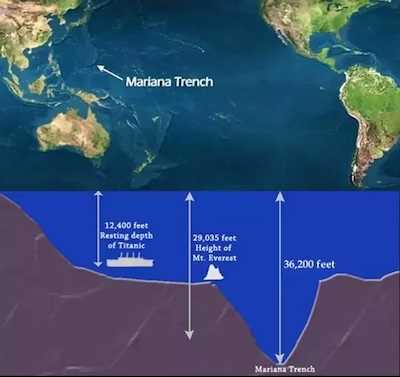
The deep sea has always been a source of fascination and mystery for humans. Vast and virtually unexplored, the depths of the ocean house a world unlike any other on Earth. In this article, we will delve into the mesmerizing realm of the deep ocean, unravelling the secrets of its abyssal wonders.
Descending thousands of meters below the surface, the abyssal zone is characterized by extreme darkness and high pressure. It is a realm of perpetual darkness, where sunlight never penetrates. Yet, life manages to thrive in this harsh environment. Strange and otherworldly creatures have adapted to the extreme conditions, evolving in unique and fascinating ways.
One of the most astonishing inhabitants of the abyssal zone is the anglerfish. With its bioluminescent lure and grotesque appearance, this deep-sea predator has captured the imagination of scientists and artists alike. The anglerfish serves as a reminder of the incredible diversity that exists within the deep ocean, where adaptation has led to the emergence of bizarre and captivating lifeforms.
- The Mariana Trench: The Deepest Point on Earth
- The Abyssal Zone: A Mysterious and Dark World
- The Strange Creatures of the Deep Sea
- Another bizarre deep-sea creature is the vampire squid. Despite its name, the vampire squid is actually a gentle and harmless creature that feeds on marine detritus and small organisms. It possesses unique retractable webbing between its limbs, which it can use to capture debris and create a shield for protection.
- The cock-eyed squid is another fascinating creature that inhabits the deep sea. This squid has one normal eye and one eye that is disproportionately large and bulging. This unusual adaptation allows it to simultaneously scan the water above and below, helping it to detect prey and predators in its surroundings.
- The Challenging Exploration of the Abyss
- Extreme Pressure
- Pitch Darkness
- Extreme Cold
- The Impact of the Deep Ocean on Climate
- Ocean Circulation
- Carbon Storage
- Heat Absorption
- Preserving the Fragile Ecosystem of the Abyss
- Question-answer:
- What is the deepest ocean in the world?
- How deep is the deepest part of the ocean?
- What organisms can survive in the deepest parts of the ocean?
- Are there any unique geological features in the deepest parts of the ocean?
- What scientific discoveries have been made in the deepest parts of the ocean?
- Why is the ocean considered the deepest abyss?
The Mariana Trench: The Deepest Point on Earth
The Mariana Trench, located in the western Pacific Ocean, holds the title for being the deepest point on Earth. It is a crescent-shaped trench that stretches approximately 2,550 kilometers.
| Location: | Western Pacific Ocean |
| Maximum Depth: | 10,994 meters (36,070 feet) |
| Trench Type: | Trench |
| Formation: | Subduction zone |
The Mariana Trench was formed due to the process of subduction, where one tectonic plate is forced beneath another. In this case, the Pacific Plate is subducting beneath the Philippine Sea Plate.
At its deepest point, known as the Challenger Deep, the Mariana Trench reaches a maximum depth of 10,994 meters (36,070 feet). This depth is greater than the height of Mount Everest, the highest point on Earth.
The extreme depth of the Mariana Trench presents numerous challenges for exploration. The pressure at the bottom is about 1,086 times greater than at sea level, making it extremely difficult for humans to explore.
Despite these challenges, several deep-diving expeditions have been conducted to the Mariana Trench. The first successful manned dive to the Challenger Deep was accomplished by Jacques Piccard and Don Walsh in 1960.
The Mariana Trench remains an area of great scientific interest. Its extreme depth and unique environment provide valuable insights into the geological, physical, and biological processes of our planet.
The Abyssal Zone: A Mysterious and Dark World
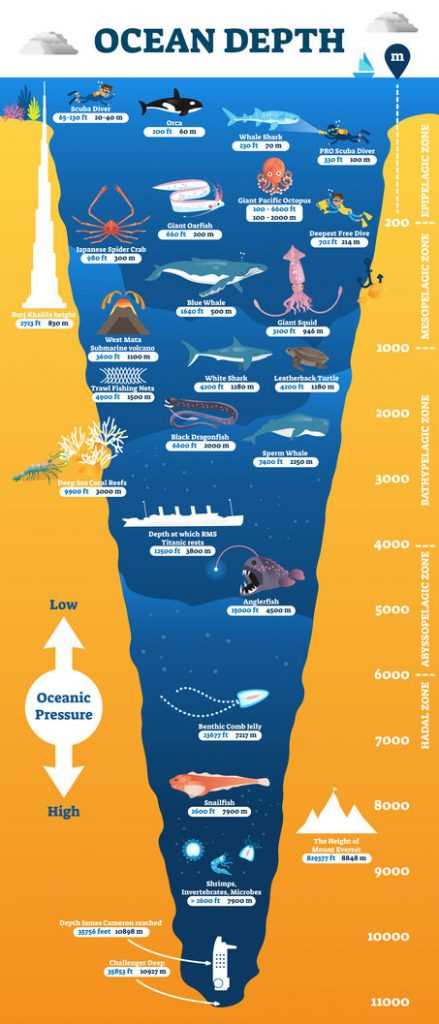
The abyssal zone is one of the most enigmatic and least explored regions on Earth. Situated at depths between 4,000 and 6,000 meters, this dark and extreme environment is teeming with strange and unique organisms that have adapted to survive in its harsh conditions.
With no sunlight reaching this depth, the abyssal zone is perpetually shrouded in darkness. In fact, the darkness is so complete that the region is often referred to as the “midnight zone.” This absence of light has led to the evolution of numerous fascinating adaptations among the creatures that inhabit this realm.
The abyssal zone is characterized by near-freezing temperatures, high pressures, and low nutrient levels. Despite these challenges, a remarkably diverse array of organisms call this mysterious world home. From monstrous anglerfish that use bioluminescence to attract prey in the darkness, to giant isopods that scavenge the ocean floor for food, the abyssal zone is a hotbed of biological novelty.
In addition to its unique residents, the abyssal zone also serves as an important sink for organic matter and carbon dioxide. Organic particles from the surface sink to the bottom of the ocean, providing an important source of food for deep-sea organisms. This process helps regulate global climate by sequestering carbon dioxide, a greenhouse gas, from the atmosphere.
Exploring the abyssal zone presents numerous challenges to scientists. The extreme pressure and darkness require specialized equipment, such as remotely operated vehicles (ROVs) and deep-sea submersibles, to study and collect samples. Despite these challenges, our understanding of the abyssal zone continues to expand, revealing new insights into the fascinating world of the deep sea.
- The abyssal zone lies at depths between 4,000 and 6,000 meters, making it one of the deepest parts of the ocean.
- The absence of sunlight gives the abyssal zone its dark and mysterious character.
- The extreme conditions of the abyssal zone have led to unique adaptations among the organisms that inhabit it.
- Exploring the abyssal zone requires specialized equipment and presents significant challenges to scientists.
The Strange Creatures of the Deep Sea
The deep sea is a mysterious and largely unexplored realm, home to an incredible array of strange and otherworldly creatures. These creatures have evolved to survive in the extreme conditions of the abyss, where sunlight is nonexistent and the pressure is crushing.
One such fascinating creature is the anglerfish, known for its bioluminescent lure that attracts unsuspecting prey. The female anglerfish is much larger than the male and has a long, thin filament protruding from its head, which glows with a faint light. This lure is used to entice small fish and crustaceans into its waiting jaws.
Another bizarre deep-sea creature is the vampire squid. Despite its name, the vampire squid is actually a gentle and harmless creature that feeds on marine detritus and small organisms. It possesses unique retractable webbing between its limbs, which it can use to capture debris and create a shield for protection.
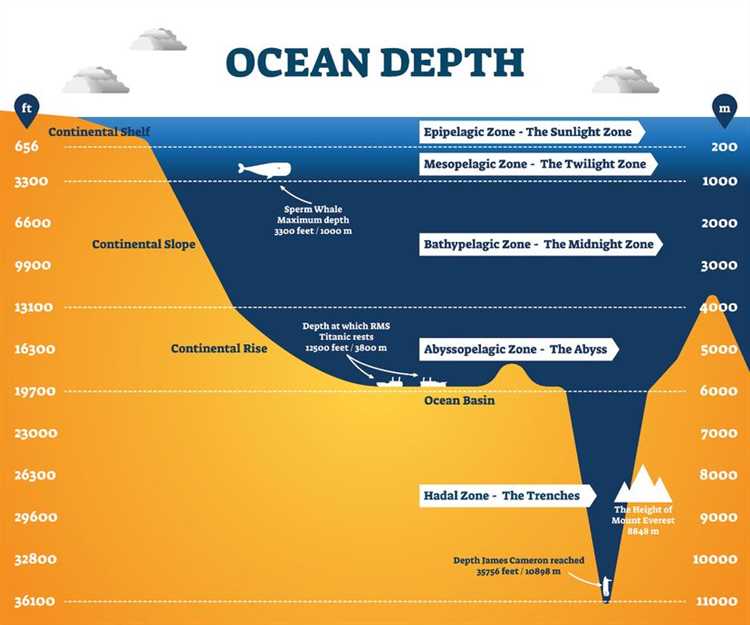
The deep sea is also home to the giant isopod, a crustacean that can reach lengths of up to 16 inches. These creatures have a hard exoskeleton and are well-adapted to the high-pressure environment of the abyss. They are scavengers, feeding on dead animals that sink to the ocean floor, and are known for their slow metabolism and long lifespans.
One of the most peculiar deep-sea residents is the blobfish, a gelatinous and gelatinous creature that lives at depths of up to 4,000 feet. Due to the extreme pressure, its gelatinous flesh has adapted to become slightly denser than water, allowing it to float just above the seafloor without expending much energy.
The cock-eyed squid is another fascinating creature that inhabits the deep sea. This squid has one normal eye and one eye that is disproportionately large and bulging. This unusual adaptation allows it to simultaneously scan the water above and below, helping it to detect prey and predators in its surroundings.
These are just a few examples of the strange and marvelous creatures that inhabit the deep sea. As scientists continue to explore this mysterious realm, we can only imagine what other remarkable creatures are waiting to be discovered.
The Challenging Exploration of the Abyss
Exploring the deep ocean abyss poses numerous challenges for scientists and researchers. As we venture into the darkest depths of the ocean, the challenges become more daunting and the risks increase exponentially. Understanding these challenges is crucial in order to successfully unveil the mysteries of the abyss.
Extreme Pressure
One of the most significant challenges in exploring the abyss is the extreme pressure that exists at great depths. The weight of the overlying water column creates immense pressure, which can reach over 1000 times atmospheric pressure at the bottom of the ocean. This poses a major obstacle for manned exploration as it requires specially designed submersibles and equipment capable of withstanding such pressures. Even the slightest structural weakness can result in catastrophic failure.
Pitch Darkness
The abyss is an environment of complete darkness, with sunlight unable to penetrate its depths. This lack of light poses unique challenges for exploration and navigation. Scientists rely on artificial lights and advanced imaging technologies to capture images and study the unique marine life that inhabits this dark world. These exploration tools must be carefully designed and adapted to function in the absence of natural light.
Another challenge associated with darkness is the disruption of biological clock rhythms. Many deep-sea creatures have adapted to the absence of light by developing their own biological clocks. Disrupting these rhythms through artificial light can impact the behavior and survival of these organisms.
Extreme Cold
The deep ocean abyss is characterized by freezing temperatures that can drop below zero. These extreme cold temperatures pose additional challenges to exploration, especially for submersibles and equipment that need to function in such harsh conditions. Specialized insulation and heating mechanisms are required to ensure the survival and functionality of equipment. Without adequate protection, the cold can cause damage and hinder scientific progress.
Additionally, the extreme cold impacts the metabolism and physiology of the unique species that inhabit the abyss. Scientists are still studying how these organisms have adapted to survive in such cold temperatures.
- Pressure
- Pitch Darkness
- Extreme Cold
Despite these challenges, scientists continue to push the boundaries of exploration in the abyss. Advances in technology and our understanding of the deep ocean have allowed us to make significant progress in uncovering the mysteries that lie beneath. The exploration of the abyss is not only a scientific endeavor but also a testament to human curiosity and our desire to understand the vastness of the world around us.
The Impact of the Deep Ocean on Climate
The deep ocean plays a crucial role in regulating Earth’s climate. While the surface of the ocean is more visible and often receives more attention, it is the deep ocean that has the greatest influence on our planet’s climate system.
Ocean Circulation
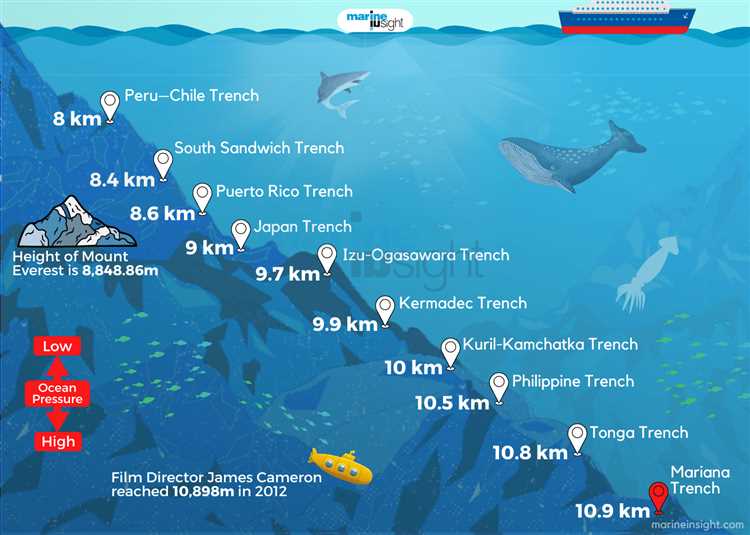
One of the key ways in which the deep ocean affects climate is through its role in global ocean circulation. The movement of ocean currents, both at the surface and in the deep, helps to distribute heat around the world. Deep ocean currents, such as the thermohaline circulation, play a particularly important role in carrying heat from the equator towards the poles, helping to regulate temperatures and climate patterns.
Carbon Storage
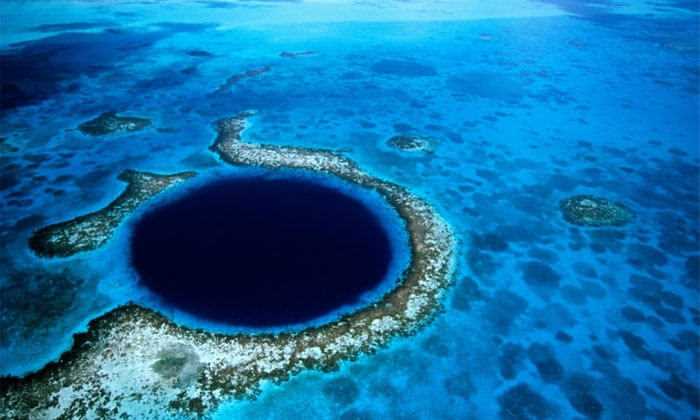
The deep ocean also plays a vital role in the global carbon cycle. As carbon dioxide (CO2) levels rise in the atmosphere due to human activities, the ocean acts as a carbon sink, absorbing a significant amount of this greenhouse gas. Much of the carbon is transported to the deep ocean through sinking particles and the biological pump, where it can be stored for hundreds or even thousands of years. This process helps to mitigate the impacts of human-induced climate change.
Furthermore, the deep ocean is home to vast stores of organic carbon in the form of dead organisms and other organic matter. If disturbed, these carbon reserves could be released into the atmosphere, amplifying the effects of climate change. Understanding the dynamics of carbon storage and release in the deep ocean is therefore crucial for predicting future climate scenarios.
Heat Absorption
The deep ocean is also important in absorbing and storing heat from the atmosphere. As greenhouse gases trap heat in the atmosphere, the ocean acts as a heat sink by absorbing a significant portion of this excess energy. This helps to regulate surface temperatures, preventing more extreme climate conditions. The deep ocean serves as a buffer, temporarily storing heat that can be released back into the atmosphere over longer timescales.
Additionally, the deep ocean plays a role in regulating extreme weather events, such as hurricanes. The warm waters of the deep ocean provide the energy needed for storms to form and intensify. Understanding the interaction between the deep ocean and the atmosphere is essential for predicting and mitigating the impacts of these weather events.
In conclusion, the deep ocean has a profound impact on climate. From its role in ocean circulation and carbon storage to heat absorption and regulation of extreme weather events, the deep ocean is a crucial component of Earth’s climate system. Understanding and protecting this vital ecosystem is essential for maintaining a stable and habitable planet for future generations.
Preserving the Fragile Ecosystem of the Abyss
The abyssal zone, also known as the deep sea, is one of the most mysterious and unexplored regions on our planet. It is home to a unique and fragile ecosystem that is under threat from human activities.
Preserving the abyssal ecosystem is crucial for maintaining the balance of our planet’s ecosystems as a whole. The abyss is inhabited by a variety of specialized species that have adapted to survive under extreme conditions, such as high pressure, low light, and limited food availability.
Overfishing is one of the major threats to the abyssal ecosystem. Deep-sea fish species, like the anglerfish and gulper eel, are often caught as bycatch in large-scale commercial fishing operations. This disrupts the food chain and can lead to population decline or even extinction of these species.
Deep-sea mining is another danger to the abyssal ecosystem. Mining operations can destroy the delicate habitats of deep-sea organisms and cause irreversible damage to the ecosystem. The extraction of minerals, like manganese and cobalt, also releases toxic chemicals into the water, further impacting the abyssal ecosystem.
Effective conservation measures need to be implemented to protect the fragile abyssal ecosystem. This includes establishing marine protected areas where fishing and mining activities are restricted or prohibited. It is also important to promote sustainable fishing practices and minimize bycatch in deep-sea fisheries.
Improved scientific research and monitoring are necessary to better understand the abyssal ecosystem and identify the most vulnerable species and habitats. This information can then be used to develop targeted conservation strategies and initiatives.
Public awareness and education are key in preserving the abyssal ecosystem. By raising awareness about the importance of conserving this unique environment, we can encourage individuals and communities to take action and support initiatives that protect the delicate balance of the abyss.
In conclusion, the abyssal ecosystem is a valuable and fragile part of our planet’s biodiversity. It is essential that we take immediate action to preserve and protect this unique and mysterious world, ensuring its survival for generations to come.
Question-answer:
What is the deepest ocean in the world?
The deepest ocean in the world is the Pacific Ocean.
How deep is the deepest part of the ocean?
The deepest part of the ocean is the Mariana Trench, which reaches a depth of approximately 36,070 feet (10,994 meters).
What organisms can survive in the deepest parts of the ocean?
Organisms that can survive in the deepest parts of the ocean are specially adapted to the extreme conditions. These include deep-sea fish, such as anglerfish and gulper eels, as well as various species of octopus and squid.
Are there any unique geological features in the deepest parts of the ocean?
Yes, there are unique geological features in the deepest parts of the ocean. The Mariana Trench, for example, has a unique formation called the Challenger Deep, which is the deepest part of the trench. It is characterized by a V-shaped valley and is home to many interesting geological formations.
What scientific discoveries have been made in the deepest parts of the ocean?
Scientific discoveries in the deepest parts of the ocean have included the discovery of new species, such as the Mariana snailfish, as well as new geological formations and unique ecosystems. These discoveries have helped scientists better understand the biodiversity and geological processes of the deep sea.
Why is the ocean considered the deepest abyss?
The ocean is considered the deepest abyss because it reaches depths of over 36,000 feet in certain areas, such as the Mariana Trench.